 A Tainted Heart Bleeds: A Gripping Historical Mystery Romance (House of Croft)
A Tainted Heart Bleeds: A Gripping Historical Mystery Romance (House of Croft) by
Sophie Barnes Format: eARC Source: author Formats available: paperback, ebook
Genres: historical fiction,
historical mystery,
historical romance,
regency mystery Series: House of Croft #2 Pages: 440
Published by Sophie Barnes on October 29, 2024
Purchasing Info: Author's Website,
Amazon,
Barnes & Noble,
Kobo Goodreads
He’ll never forgive her deception, or the hold she still has on his heart…
Adrian Croft’s worst fear has been realized. His wife, the sweet woman who swept past his every defense, is a cunning spy working against him. Forced to play a dangerous game where one wrong move could see him destroyed, he must unravel her secrets while hunting a far more sinister threat.
Samantha knew her decision to marry her target would come at a price. Now, having lost her husband’s trust and affection, she’ll do whatever it takes to win it all back – abandon past loyalties, spill her secrets, and catch a killer. But will it be enough to undo the damage?
-One series, one couple, and the brutal challenges they must face-
If you like What Angels Fear, Silent in the Grave, and Murder on Black Swan Lake, you’ll devour Sophie Barnes’ thrilling new series.
Buy A Tainted Heart Bleeds and continue this action-packed adventure today!
Welcome to the second day of the book tour for A Tainted Heart Bleeds by Sophie Barnes, the second book in the compelling Regency mystery series, the House of Croft. I’ve already reviewed both the first book in the series, A Vengeful King Rises, as well as this second book – and loved them both. (Check out my reviews here and here to get all the deets of just how much I was captivated by each. (I’m already on tenterhooks for the third book, A Ruthless Angel Weeps, coming in late January.)
But someone else’s opinion might not be enough to tempt you, especially on a day already filled with as many distractions as this one is. I’m hopeful that if I can’t convince you, that this excerpt from the opening chapter will grab your attention – and not let go.
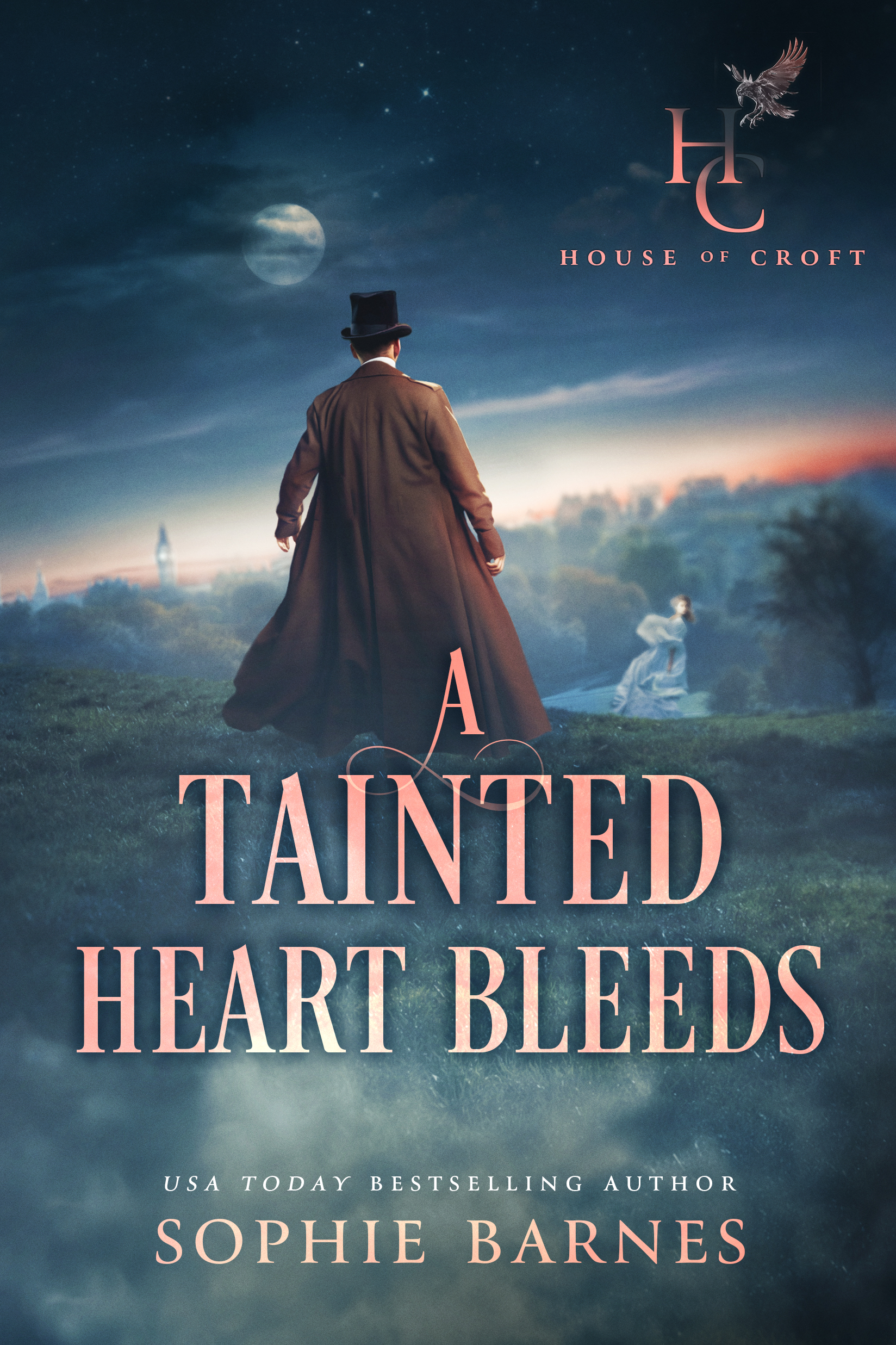
House of Croft, Book 2
Historical Mystery/Thriller/Romance
Date Published: 10-29-2024
He’ll never forgive her deception, or the hold she still has on his
heart…
Adrian Croft’s worst fear has been realized. His wife, the sweet
woman who swept past his every defense, is a cunning spy working against
him. Forced to play a dangerous game where one wrong move could see him
destroyed, he must unravel her secrets while hunting a far more sinister
threat.
Samantha knew her decision to marry her target would come at a price. Now,
having lost her husband’s trust and affection, she’ll do
whatever it takes to win it all back – abandon past loyalties, spill
her secrets, and catch a killer. But will it be enough to undo the
damage?
Excerpt from A Tainted Heart Bleeds by Sophie Barnes
Chapter One
London, August 15th, 1818
Lady Eleanor dropped onto the stool in front of her vanity table. Exhausted from entertaining dinner guests with her parents, she looked forward to climbing into the soothing comfort of her bed.
Something pushing against her leg made her lower her gaze to Milly, the miniature poodle her parents had gifted her with for her sixteenth birthday. Rising onto her hind legs, Milly shifted her paws to better press her damp nose against Eleanor’s thigh, her stubby tail wagging with eager affection.
Eleanor chuckled and scooped the pup into her lap. She raked her fingers through Milly’s fur, scratched her a few times behind one ear, and allowed her to settle comfortably in her lap.
“Are you ready, my lady?” The question was posed by Audrey, Eleanor’s lady’s maid. A short woman with dark brown hair and eyes to match, the servant was five years Eleanor’s senior and possessed a positive outlook to match her own.
Eleanor glanced at her and smiled in response to the warmth she found in Audrey’s eyes. “Yes. Please begin.”
Audrey raised the comb she’d collected earlier and drew it through Eleanor’s hair. Molly snuggled farther into the circle of her arms, nails scratching a little at Eleanor’s lap as she repositioned her legs.
Eleanor sighed and sent her bed a longing glance. The coverlet had been folded back to display the crisp white sheets that beckoned. It would be good to climb between them and let the weariness seep from her body.
Molly’s curls compressed beneath the weight of her hand as Eleanor stroked the fluffy fur. Glancing up, she caught Audrey’s gaze in the mirror, her thoughts returning to the charity visit she’d planned for tomorrow. “Maybe you’re right about the brown woolen spencer. I never wear it, so I might as well include it in the donation.”
“Are you sure?” Audrey set the comb aside and collected a glass bottle containing Warren & Rosser’s Milk of Roses lotion.
The question was a legitimate one since Eleanor had argued against the suggestion yesterday when she and Audrey had prepared the box that would go to St. Augustine’s Church. The spencer had been a gift from her aunt three Christmases ago. It was undoubtedly lovely, but every time she’d put it on she felt it didn’t quite suit her.
“Yes,” she said, her mind made up. “There’s no sense in it taking up space in the wardrobe when it can keep someone less fortunate warm.”
Audrey dabbed a bit of lotion on Eleanor’s face and began rubbing it in with wonderfully soothing circular motions. “I’m always impressed by your kindness, my lady.”
But was she always kind? Guilt gathered in Eleanor’s stomach, becoming so heavy it felt like a block of lead. The choice she’d made for herself – for her future – had not been easy. She hated how selfish it made her feel.
Yet she managed to smile and pretend Audrey’s comment was welcome. “Thank you.”
Audrey responded with a smile of her own and proceeded to plait Eleanor’s hair. The peaceful activity calmed her mind. She allowed herself to focus on what was to come, instead of worrying over the past.
She’d had her say, and in so doing, she’d paved the way to a new adventure.
A surge of excitement filled her breast at this thought. Everything would be fine. All she needed was rest. The maid finished her ministrations and tidied up. Eleanor set Molly down and climbed into bed. The mattress sagged beneath her weight, the cool sheets inviting her to sink deeper.
“Would you like me to close the window before I go?” Audrey asked.
“No. Leave it open.” The afternoon sun pouring into the room several hours before had made it unbearably warm and stuffy. She couldn’t sleep like that.
“I’ll bid you good night then, my lady.” Audrey called for Molly to join her and the dog complied without question, knowing full well that a walk and a treat awaited.
“Good night,” Eleanor replied, “and thank you for your help.”
The maid left and Eleanor reached for her book. This was her favorite time to read, when all was silent and there was no risk of being disturbed. She opened Pamela and flipped to the spot where she’d left off the previous evening.
A gentle breeze streamed through the window, toying with the curtains. Distant laughter reached her ears. It was followed by a horse’s faint whinny. Eleanor’s eyes grew heavy. The book began sagging between her hands.
She yawned and it felt like only a moment had passed before she was startled by a loud noise. Her eyes snapped open, adjusting and observing. The light by which she’d been reading had burned itself out. Her book had slipped from her grasp. She must have fallen asleep.
Light flashed beyond the window. A resounding boom followed. The curtains flapped with wild abandon while rain poured down from the heavens. She blew out a breath and went to close the window. It was just a storm. No need for alarm.
Barefooted, she padded across the Aubusson rug and noted that parts of it were now damp from the rain. She leaned forward through the window’s opening, her abdomen pressing into the sill, wetting her nightgown as she reached for the handle.
Her hand caught the slick wood and she pulled the window shut. A welcome silence followed, cocooning her from the elements. Pausing briefly, she watched water streak down the smooth window pane, saw lightning flash across the sky.
Intent on returning to bed, she took a step back, prepared to close the curtains, and froze when her toes connected with something unpleasant. Not just water, but a thick and squishy substance of sorts. But how could that be? Confused, she dropped her gaze, but the darkness was blinding. She’d need a candle or an oil lamp in order to see.
She straightened and started to turn, her aim to locate the tinderbox she kept on her nightstand, when a pair of large hands captured her throat. She opened her mouth, attempted to scream, but couldn’t even manage a gasp as the fingers dug deeper and cut off her breath.
Terrified, she stared at the window, at her own blurry figure reflected in the wet glass, and the larger man standing behind her. Tears welled in her eyes. She clawed at the hands that gripped her, kicked her attacker’s shins, and did what she could to wriggle free.
None of it worked.
He was much stronger than she, and her strength waned with each breath she was denied. Her heart fluttered desperately. It begged her to keep on fighting. But it was no use.
She had already lost
#
Chief Constable Peter Kendrick removed his hat as he entered Orendel House. Given the circumstances, a somber atmosphere wasn’t surprising. But the gloom he encountered in the elegant foyer was unparalleled.
Servants stood near the walls, slumped like wilting plants. Maids wept while the male servants stared into nothing, their stricken expressions underscoring the horror they’d woken up to. Even the butler struggled to speak when he offered to take Peter’s hat, his voice cracking before he averted his gaze.
“Where are the earl and countess?” Peter asked.
The butler gave his eyes a quick swipe and straightened his posture. “In the parlor with their…remaining children.” Someone sobbed and the old man’s expression twisted with grief. “As you can no doubt imagine, this is terribly difficult for them. They asked me to show you upstairs.”
“Very well.”
He followed the butler, one step at a time, a couple of Runners at his back. They arrived on the landing, their footfalls muted by the plush carpet lining the hardwood floor. A few more paces and then…
The butler paused and gestured toward a door. “Through there. I realize I ought to come with you, but… Do you mind if I remain here?”
“Not at all.” Peter reached Lady Eleanor’s bedchamber doorway and froze. A sick feeling caught hold of his stomach. Ghastly didn’t come close to describing the scene he beheld. This was the sort of thing that could make men lose all hope in humanity. It was…barbaric.
“Good lord,” murmured Anderson, the Runner standing at Peter’s right shoulder.
Anderson’s colleague, Lewis, only managed a faint, “Excu…” before he bolted for the stairs, no doubt hoping to make it outside before he vomited.
Peter swallowed and took a deep breath, then entered the room. It hadn’t been so long ago since another young woman’s body was found – the last in a series of brutal murders that left him baffled for more than a year. But that killer was dead, so it couldn’t be the same man who’d acted here.
Besides, this was different and shockingly worse.
He clenched his jaw, reminded himself that he had a job to accomplish. There was just…so much blood. It felt like the room was bathed in it. And the victim…
Forcing himself to employ an analytical mindset, he considered her position on the bed and the clean blanket draped over her torso and legs.
“I’ll need the usual sketches,” he said.
“Already working on it,” Anderson told him, his voice gruff.
“You may want to wait a moment.” Peter studied Lady Eleanor’s face and the empty eye sockets that seemed to mock him. “Until I’ve removed the blanket.”
“Sir?”
“It doesn’t belong. Someone placed it here after the fact, no doubt to protect her modesty.” He shot a look over his shoulder. “If you’ll please shut the door.”
A firm click followed and then, “Why would the bastard take her eyes?”
“I don’t know. Could be a trophy of sorts. There’s no telling what goes on in such vile creatures’ heads.”
Slowly, with respect and consideration directed toward the poor young woman whose body lay on the bed before him, Peter folded back the blanket and shuddered. Whatever nightgown she’d worn to bed was gone, her naked body left on display.
Air rushed into Peter’s lungs on a sharp inhalation. She’d been stabbed too many times to count, as though her attacker hadn’t been able to stop. And her neck – the skin there was a bright red shade.
Swallowing, he surveyed the rest of the room while Anderson kept on drawing.
A vase lay on the floor near one of the windows, smashed to pieces. The flowers were strewn across the Aubusson rug. They’d probably ended up there during a struggle. Peter lowered himself to a crouch, his fingertips testing a dark brown stain and feeling the wetness. Mud.
“Take notes too, will you?” Peter retreated until he’d reached the bedchamber door. He grabbed the handle. “And cover her with the blanket once you’re done. I’ll question the servants in the meantime.”
#
The parlor was made available for interviews, each servant introduced to Peter by the butler as he showed them into the room. Peter considered the latest arrival. Audrey was her name. Short in stature, with mousish features and lackluster hair, she’d been Lady Eleanor’s lady’s maid.
“I…I don’t…” Audrey gulped.
She dabbed at her watery eyes again. Her handkerchief looked heavy and wet. Peter handed her a fresh one and gave her a moment to try and collect herself. Not easy, he realized, since she’d been the one who’d discovered her mistress’s body when she’d gone to rouse her.
“Did you always wake her in the mornings?” Peter gently asked.
A nod accompanied trembling lips. “She was always so…active. Liked making the…the most of each day. Today… Oh dear. Please forgive me.”
“It’s quite all right,” Peter told her and waited once more for the woman’s tears to abate. “Take your time.”
She swallowed, licked her lips, and seemed to straighten a bit. “We planned to visit St. Augustine with a few donations. My mistress…she was so very kind I…I don’t understand why anyone might have wanted to hurt her.”
“So you can think of no enemies?”
“None.”
“No hopeful suitors she might have spurned?”
Audrey shook her head. “She’s engaged to Mr. Benjamin Lawrence. They were supposed to marry three months ago, toward the end of April, but his horse-riding accident forced a postponement.”
Peter recalled news of the tragedy. The event had turned the young man into a cripple. He’d lost the use of his legs. “She still meant to go through with it, despite what happened?”
“Of course.” Additional tears slid down Audrey’s cheeks. “My mistress loved Mr. Lawrence and intended to stand by him. That’s the sort of person she was.”
And yet, the nature of her death suggested someone had loathed her beyond all reason. Peter made a few notes in his notebook, his pencil scratching the paper with quick and efficient strokes.
“Thank you, Audrey. That will be all for now.” He accompanied her to the door and called for the next servant.
Again, his thoughts wandered back to the murders that took place earlier in the year. Those women had all seemed like proper young ladies. Friends and family had vouched for them. Yet they’d each had a secret that had gotten them killed.
In all likelihood, Lady Eleanor had secrets too. If he was to figure out who killed her, he’d have to discover which of hers had led to her death.
#
There was no greater nuisance than murder.
It was hard to predict how one would play out. Killing Lady Eleanor had been messier than he’d intended. Perhaps because he’d allowed himself to get carried away.
His lips curled. At least he’d had the foresight to stash a change of clothes for himself at St. George’s burial ground. Returning home covered in blood would not have helped him get away with the crime. As he intended to do.
Hands shoved into the pockets of a clean pair of trousers, he stood by his bedchamber window and watched the London traffic go by.
He had no regrets. She’d deserved every part of what he’d done.
His attention focused on the carriages filling the street and on the people hurrying by. It was the busiest hour of the day, when men of consequence made their way to Parliament while those who belonged to the working class went off to start their jobs.
Bow Street would have its hands full this morning. He casually wondered if they were examining Lady Eleanor’s body right now and where the clues they discovered might lead them.
Spotting a young girl who carried a crate of eggs on her head, he tracked her as she walked along the opposite side of the street. A man coming the other way nudged her shoulder as he pushed past her, but failed to disrupt her stride.
She threw a quick glance toward him then stepped off the pavement and hurried between two carriages, making her way to this side of the street.
A couple of street urchins came from the left at a run, most likely fleeing someone whose pocket they’d picked. Leaping into the street at the same exact time as the girl with the eggs attempted to exit, they crashed into her, tripping before regaining their balance and sprinting onward while she was sent reeling.
Down went the crate and all of her eggs, straight into the gutter.
Not one person stopped to inquire about her wellbeing. She was invisible to the crowd – just another lowly individual doing her best to scrape by. Too much trouble for the middle or upper class to get involved with. Too time consuming for the rest.
And yet, as he watched the poor wretch try to salvage the few eggs that somehow remained intact, there was no doubt she’d prefer her situation to Lady Eleanor’s at the moment.
He watched the girl until she’d gathered whatever she could and continued along the street, vanishing from his view before he turned from the window. His gaze went to his bedside table and he crossed to it, retrieved a small key from his jacket pocket, then dropped into a crouch.
With adroitness, he set the key in the lock of the door beneath the drawer and turned it. The door opened and he reached inside, retrieving a jar that he held up against the bright morning light.
A pair of eyes contained in a clear solution stared back at him while his lips twitched with amusement. The last time they’d talked, Lady Eleanor had insisted she’d no desire to see him again.
It was a wish he’d been more than happy to fulfill.
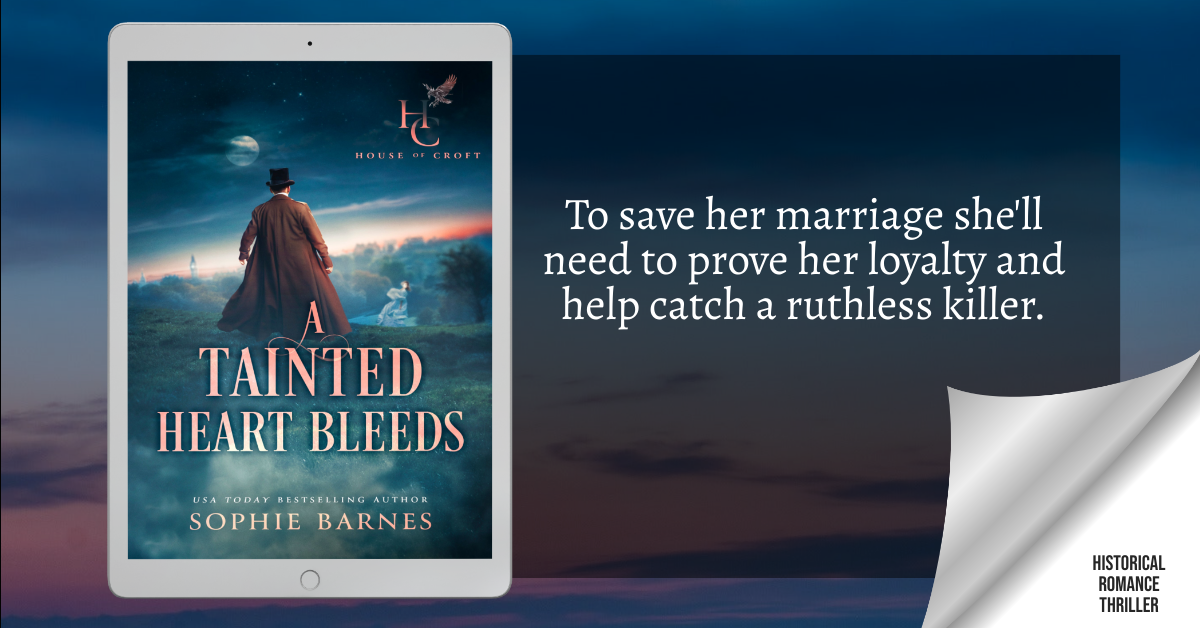
About the Author

USA TODAY bestselling author Sophie Barnes writes historical romance novels
in which the characters break away from social expectations in their quest
for happiness and love. Having written for Avon, an imprint of Harper
Collins, her books have been published internationally in eight languages.
With a fondness for travel, Sophie has lived in six countries, on three
continents, and speaks English, Danish, French, Spanish, and Romanian with
varying degrees of fluency. Ever the romantic, she married the same man
three times—in three different countries and in three different
dresses.
When she’s not busy dreaming up her next swoon worthy romance novel,
Sophie enjoys spending time with her family, practicing yoga, baking,
gardening, watching romantic comedies and, of course, reading.
Contact Links
Website
Facebook
Twitter
Goodreads
Pinterest
Instagram
BookBub
Purchase Links
Universal Link
Amazon
Barnes and Noble
Kobo
iBooks
Smashwords
a Rafflecopter giveaway
 A Snake in the Barley (An Owen Archer mystery Book 15) by Candace Robb
A Snake in the Barley (An Owen Archer mystery Book 15) by Candace Robb  The previous entry in this marvelous long-running series, A Fox in the Fold, was all wrapped up in Owen Archer’s past. This current entry dives deeply into the past of Owen and Lucie Archer’s friend and neighbor, tavernkeeper Tom Merchet.
The previous entry in this marvelous long-running series, A Fox in the Fold, was all wrapped up in Owen Archer’s past. This current entry dives deeply into the past of Owen and Lucie Archer’s friend and neighbor, tavernkeeper Tom Merchet. Escape Rating A-: I adore this series, and have since I read the very first book, The Apothecary Rose, as I myself was walking the streets of York on a trip just over OMG 30 years ago. Time does fly and some of it has been fun. The reading parts, certainly.
Escape Rating A-: I adore this series, and have since I read the very first book, The Apothecary Rose, as I myself was walking the streets of York on a trip just over OMG 30 years ago. Time does fly and some of it has been fun. The reading parts, certainly.
 What Child is This? (Sherlock Holmes Adventure #5) by
What Child is This? (Sherlock Holmes Adventure #5) by  I wasn’t expecting to find a Sherlock Holmes story to include in my personal
I wasn’t expecting to find a Sherlock Holmes story to include in my personal  The other case, the much more serious case, is one that literally drops into Holmes’ and Watson’s laps. Or at least falls right into their hands. They witness a well-to-do woman and her attendant get attacked by a crazed assailant who knocks them both over as he plucks the woman’s little boy right out of her arms. And attempts to flee with the child through the crowded streets.
The other case, the much more serious case, is one that literally drops into Holmes’ and Watson’s laps. Or at least falls right into their hands. They witness a well-to-do woman and her attendant get attacked by a crazed assailant who knocks them both over as he plucks the woman’s little boy right out of her arms. And attempts to flee with the child through the crowded streets. Escape Rating A: I loved this – and I think I loved it more because it feels like the characterizations of Holmes and Watson read like they owe a lot more to the screen adaptations of the past OMG 40 years, starting with Jeremy Brett, than they do to the earlier portrayals of Basil Rathbone and even the original Holmes canon itself.
Escape Rating A: I loved this – and I think I loved it more because it feels like the characterizations of Holmes and Watson read like they owe a lot more to the screen adaptations of the past OMG 40 years, starting with Jeremy Brett, than they do to the earlier portrayals of Basil Rathbone and even the original Holmes canon itself. There is a mutual respect in that friendship – a respect that would have had to have existed for Holmes to have tolerated Watson’s inability to follow his genius and for Watson to have tolerated Holmes’ frequent high-handed treatment of him. There’s also an awareness on Watson’s part that these are NEVER fair play mysteries. Holmes always keeps secrets even when that lack of knowledge might endanger Watson’s life.
There is a mutual respect in that friendship – a respect that would have had to have existed for Holmes to have tolerated Watson’s inability to follow his genius and for Watson to have tolerated Holmes’ frequent high-handed treatment of him. There’s also an awareness on Watson’s part that these are NEVER fair play mysteries. Holmes always keeps secrets even when that lack of knowledge might endanger Watson’s life.
 Grimm Curiosities by
Grimm Curiosities by  Art in the Blood (Sherlock Holmes Adventure, #1) by
Art in the Blood (Sherlock Holmes Adventure, #1) by  The case in Art in the Blood, while every bit as convoluted – and then some – as some of the original stories, displays a lot more confusion on Holmes’ part and frankly a lot more competence on Watson’s – a competency that calls back to Edward Hardwicke’s Doctor Watson, the partner of Jeremy Brett’s Holmes.
The case in Art in the Blood, while every bit as convoluted – and then some – as some of the original stories, displays a lot more confusion on Holmes’ part and frankly a lot more competence on Watson’s – a competency that calls back to Edward Hardwicke’s Doctor Watson, the partner of Jeremy Brett’s Holmes. Old Scores (Barker & Llewelyn, #9) by
Old Scores (Barker & Llewelyn, #9) by 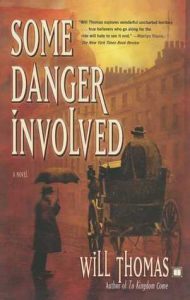 Nine books into the
Nine books into the  Escape Rating A-: It’s not really a surprise that I picked Old Scores (and also the preceding short story,
Escape Rating A-: It’s not really a surprise that I picked Old Scores (and also the preceding short story,  But in the end, what carries the story, as always, are the characters and their ever more deeply entwined relationships. So this book did exactly what I picked it up for – it took me far, far away from the problems of today.
But in the end, what carries the story, as always, are the characters and their ever more deeply entwined relationships. So this book did exactly what I picked it up for – it took me far, far away from the problems of today. A Tainted Heart Bleeds: A Gripping Historical Mystery Romance (House of Croft) by
A Tainted Heart Bleeds: A Gripping Historical Mystery Romance (House of Croft) by 
 But the circumstances, as similar as they are to the opening of
But the circumstances, as similar as they are to the opening of  So that’s all a HUGE hint that readers can’t start with this book. I think that one has to begin at the beginning with
So that’s all a HUGE hint that readers can’t start with this book. I think that one has to begin at the beginning with 
 The Booklover's Library by
The Booklover's Library by 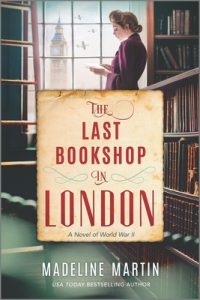 Escape Rating B: I picked up The Booklover’s Library because I was fascinated by the concept AND because I enjoyed the author’s earlier book,
Escape Rating B: I picked up The Booklover’s Library because I was fascinated by the concept AND because I enjoyed the author’s earlier book, 
 Murder at King’s Crossing (Wrexford & Sloane, #8) by
Murder at King’s Crossing (Wrexford & Sloane, #8) by  The difference between “I’ve got a bridge to sell you” and “I’ve got revolutionary plans for building bridges to sell you” should be the width of a chasm – but it’s not nearly as far as one would expect in this latest entry in the
The difference between “I’ve got a bridge to sell you” and “I’ve got revolutionary plans for building bridges to sell you” should be the width of a chasm – but it’s not nearly as far as one would expect in this latest entry in the 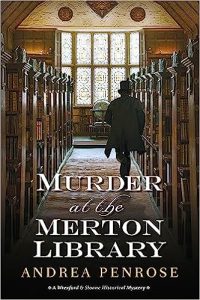 Escape Rating B: It took the longest time for this particular entry in the series to grab me. Once it finally did, I was hooked again, but it took longer than usual. It was probably a combination of not being quite the right book at the right time, the domesticity of the early scenes (which I love but not quite so thoroughly front-loaded) AND the fact that the characters were flailing around to get even a glimpse of a direction for a bit longer than is usual for this generally über-competent crew.
Escape Rating B: It took the longest time for this particular entry in the series to grab me. Once it finally did, I was hooked again, but it took longer than usual. It was probably a combination of not being quite the right book at the right time, the domesticity of the early scenes (which I love but not quite so thoroughly front-loaded) AND the fact that the characters were flailing around to get even a glimpse of a direction for a bit longer than is usual for this generally über-competent crew. Queen Macbeth by
Queen Macbeth by  Escape Rating A-: I picked up Queen Macbeth because this is the second retelling of the Macbeth story from Gruoch’s perspective, set in something much closer to the historical context, to be published this year. The other being
Escape Rating A-: I picked up Queen Macbeth because this is the second retelling of the Macbeth story from Gruoch’s perspective, set in something much closer to the historical context, to be published this year. The other being  I’m aware that I keep talking ‘around’ this story instead of ‘about’ this story because a) it’s not exactly new, it’s part of the literary trend of telling classic stories from a female perspective that was popularized by Madeline Miller’s Circe a few years back, and 2) the circumstances that surround this particular participant in that trend grabbed me more than the story itself. A fascination that only grew when I learned that this book is the latest in a series of
I’m aware that I keep talking ‘around’ this story instead of ‘about’ this story because a) it’s not exactly new, it’s part of the literary trend of telling classic stories from a female perspective that was popularized by Madeline Miller’s Circe a few years back, and 2) the circumstances that surround this particular participant in that trend grabbed me more than the story itself. A fascination that only grew when I learned that this book is the latest in a series of